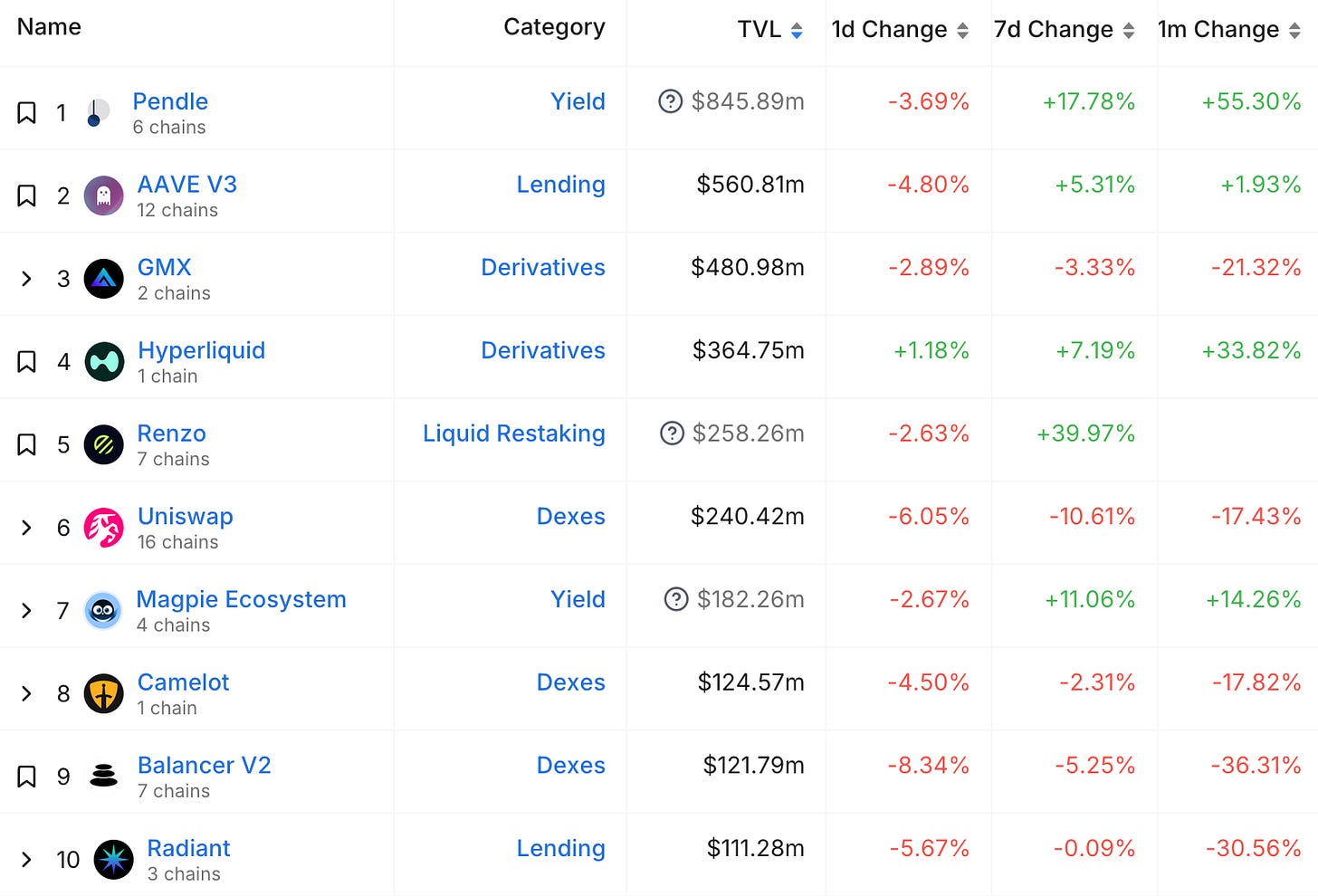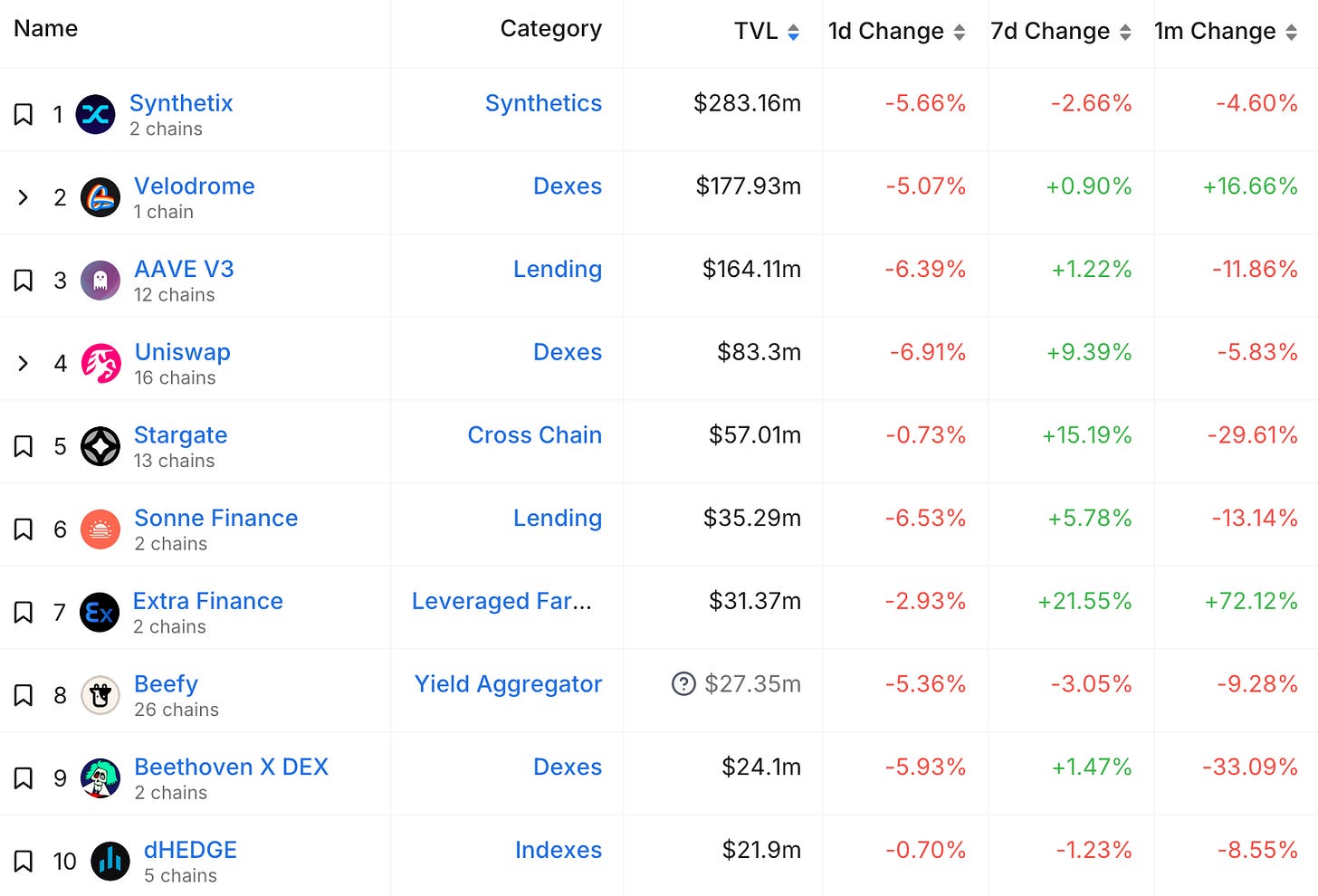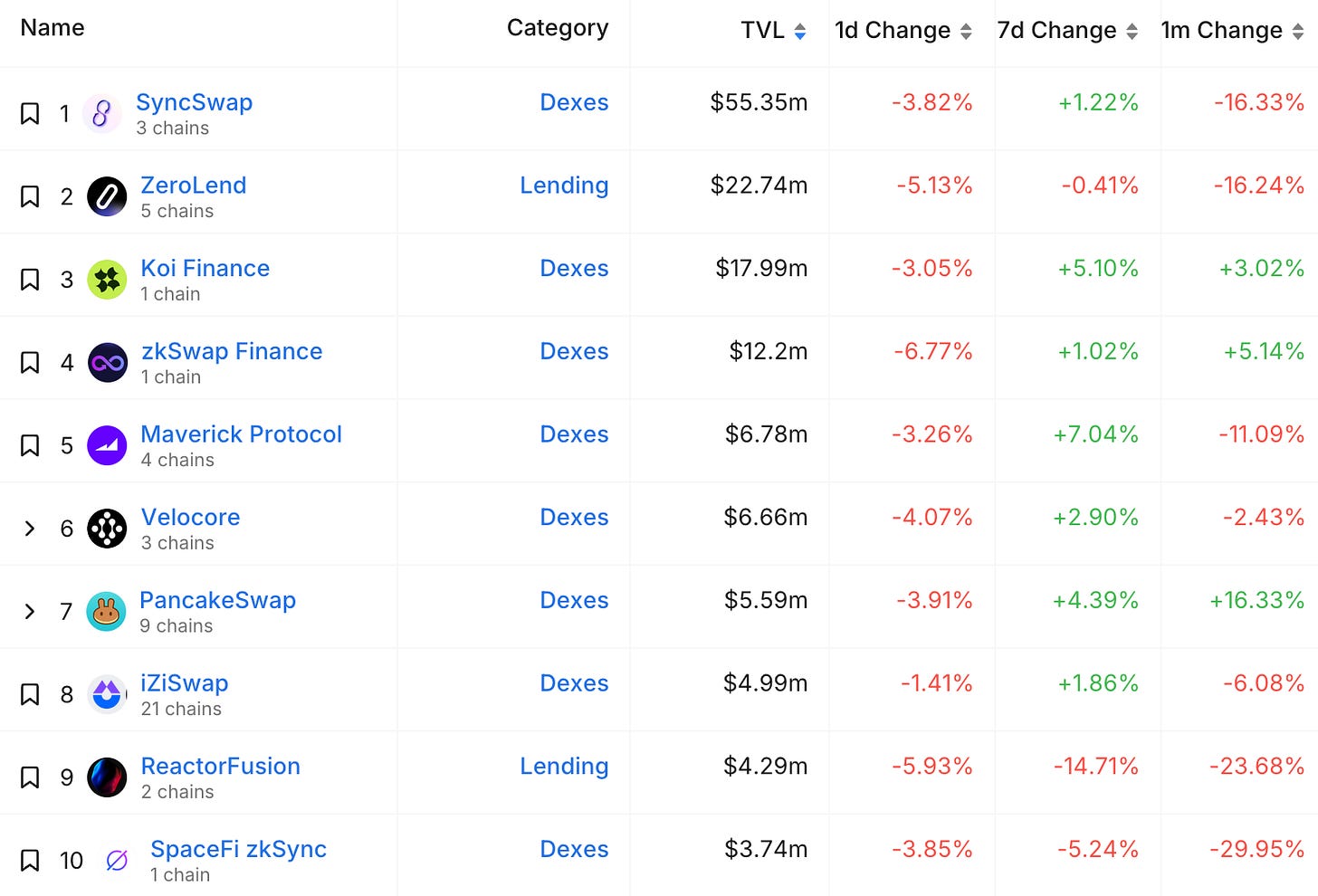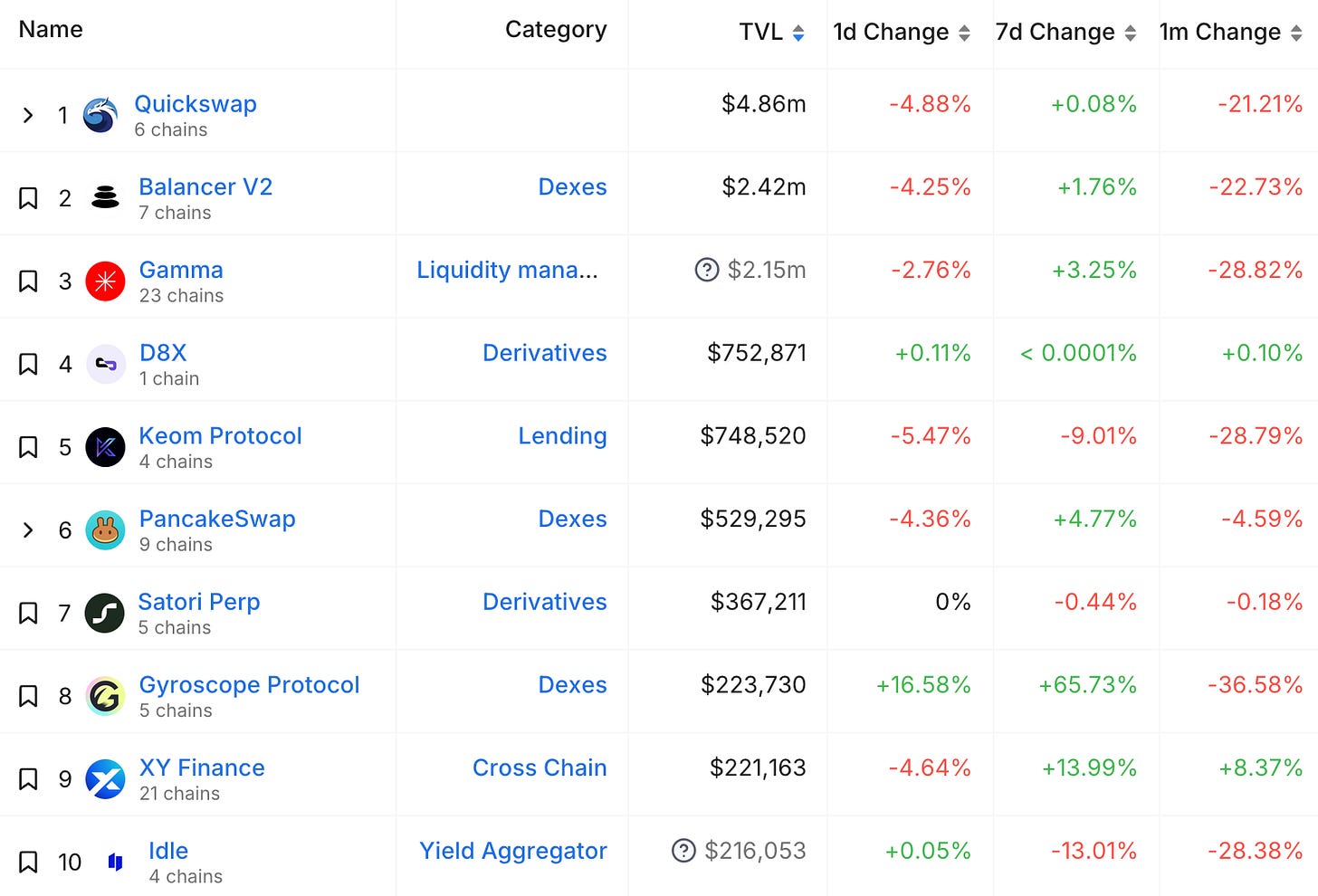Optimism's Fault Proof Goes Live on Sepolia Testnet | Layer 2 Review
Quick Reads and Hot Links Covering the People and Projects Who Are Scaling Ethereum
Dear Frens,
Is L2 season here or is it still coming?
Base is turning the L2 ecosystem on its head, surpassing $4 billion in total value locked. It has become the third-largest Layer 2 network on Ethereum and still shows no sign of slowing down.
The Layer 2 space continues witnessing rapid evolution, with various solutions competing and collaborating to address Ethereum's scalability challenges and unlock new possibilities.
In this week’s editorial, we dive into Optimism’s fault proof system, highlighting how it enables better security and decentralization. Now live on OP Sepolia, integration into mainnet is not so far away.
With so much happening in the Layer 2 space, there's plenty to dive into. So stay tuned as we continue to explore and uncover the potential of the Layer 2 ecosystem.
Contributors: Ritaakubue, Warrior, anointingthompson1, Tonytad, Boluwatife, Kornekt, WinVerse
This is an official newsletter of BanklessDAO. Please subscribe and share to help us grow our audience as we fulfill our mission to build user-friendly crypto onramps.
🗞️ Ecosystem Updates
🔒 Base Hits 4 Billion USD in TVL; Now the Third-largest L2 Network on Ethereum.
🧬 LayerAI ZK Layer-2 Testnet 2.0 is Live: LAI Becomes Gas for Transactions.
🪴 Cornucopias Game Expands Into the Fastest-Growing Layer 2 on Ethereum, Base.
🚀 Venture Firm Thesis has Launched a Bitcoin layer-2 network, Mezo.
⛓️ Chainlink Functions Goes Live on Base.
⚡ Swell L2 pre-launch deposits are live
🔥 Hot News
Thesis Unveils Mezo: A Groundbreaking Bitcoin Layer-2 Network Backed by $21 Million Investment
In a significant move aimed at amplifying Bitcoin's capabilities, Thesis, a renowned blockchain venture studio, has emerged from stealth mode with the unveiling of Mezo, an innovative Bitcoin Layer 2 network. This initiative has garnered substantial support, securing a remarkable $21 million investment from a large group of esteemed investors led by the prominent Pantera Capital.
Designed to offer expeditious and cost-effective transactions, Mezo empowers users to seamlessly engage with a growing circular economy, harnessing the full potential of Bitcoin for a comprehensive range of applications. This innovative solution aims to amplify Bitcoin's reach, facilitating the integration of approximately 25% of the global economy – a feat commensurate with the scale of today's U.S. economy.
The platform also enables users to maintain their Bitcoin holdings while simultaneously earning rewards for contributing to the security and stability of the Mezo network.
The Mezo initiative has garnered support from a lot of esteemed investors, including Multicoin, Hack VC, ParaFi Capital, Nascent, Draper Associates, Primitive Ventures, Asymmetric Ventures, Dan Held, and DCF God, underscoring the widespread confidence in Mezo's transformative potential.
To read more about this new development, check out this article.
🏛 Governance
💬 Proposals in Discussion
Arbitrum
https://arbitrumdaonews.substack.com/i/143468365/subsidy-fund-for-security-services
https://arbitrumdaonews.substack.com/i/143468365/kwenta-x-perennial-arbitrum-onboarding-incentives
Optimism
Starknet
https://community.starknet.io/t/qrcode-starknet-transaction-encoding/113885
https://community.starknet.io/t/starknet-costs-and-fees/113853
Optimism’s Fault Proof Goes Live on Sepolia Testnet
Author: Kornekt
For about two years now, Optimism, a leading Layer 2 scaling solution, has been without a functioning proof system. The fraud proof that was initially launched with the network was later disabled due to security and compatibility concerns. Since then, users have had to trust the network and a centralized security council.
This centralized approach raised significant concerns about the network's security and decentralization. The lack of a functioning proof system has brought widespread criticism of the network, with many pointing out how this creates a fundamental loophole in the system. In response to these challenges, Optimism developed a new mechanism called Fault Proofs which was rolled out on the OP Goerli testnet October last year.
On the path toward the final launch on the Optimism mainnet, the fault proof was deployed on the OP Sepolia testnet on March 19, 2024. This marked a significant milestone for Optimism, as it provided developers and security researchers the opportunity to thoroughly test the system in a simulated environment before its final implementation.
Looking Into the Fault Proof System
Optimistic rollups work with the principle that transactions are assumed valid unless proven otherwise. If someone suspects fraud, they can submit a fraud/fault proof challenging the transaction's validity. The dispute is then resolved, ensuring the transaction's integrity before finalizing it on the mainnet.
Fraud/Fault proofs are crucial for ensuring the security and trustlessness of optimistic rollups, which aim to address Ethereum's scalability challenges. They foster decentralization and security, guarantee eventual finality for valid transactions, and reduce reliance on centralized entities.
Optimism's fault proof system is designed with a particular focus on modularity and permissionless validation. The system comprises three key constituents:
1. Fault Proof Program (FPP): Serving as the system’s backbone, the FPP acts as a verifier by comparing outputs generated on Optimism’s Layer 2 with the original inputs submitted on the Ethereum mainnet (L1). This ensures that computations performed on the L2 chain remain consistent with the data on the main chain.
2. Fault Proof Virtual Machine (FPVM): This component plays a pivotal role in dispute resolution. By allowing the re-execution of the code used to generate L2 outputs, the FPVM verifies the accuracy of transactions and computations on the L2. In case of disputes, this feature provides a mechanism to confirm the validity of transactions.
3. Dispute Game Protocol: Empowering users to challenge potentially fraudulent activity, the Dispute Game Protocol facilitates a collaborative process between challengers and network validators. Users can submit proofs to initiate disputes, and the protocol ensures fair resolution through a consensus mechanism.
Why Launch On Testnet?
Before deploying the fault proof system on the mainnet, rigorous testing on a testnet is imperative for several reasons, let's find out.
Bug Detection: Testing on a testnet allows developers to identify and rectify any bugs or vulnerabilities in the system before it goes live on the mainnet, ensuring a smoother and more secure deployment.
Stress Testing: Simulating real-world conditions and high transaction volumes on a testnet helps evaluate the scalability and performance of the fault proof system, ensuring it can handle the expected load on the mainnet.
Community Feedback: Engaging with the developer community and soliciting feedback during the testnet phase provides valuable insights for optimizing the system and addressing user concerns or usability issues.
Risk Mitigation: Deploying critical security features like the fault proof system on a testnet allows for controlled experimentation and risk mitigation, minimizing the potential impact of unforeseen issues on user funds and applications.
The successful deployment of the Fault Proof system on the Sepolia testnet represents a crucial step forward for Optimism in enhancing the security and decentralization of its Layer 2 scaling solution for Ethereum.
Mainnet Launch Expectations
In an interview with CoinDesk, Karl Floersch, CEO of OP Labs, hinted that the fault proof would be live on OP mainnet later this year. While the exact launch date remains unconfirmed, post-testnet development will likely focus on further optimization, to fix bugs, improve performance, and collaborate with developers and community members to ensure seamless integration.
The successful deployment of the fault proof on the OP Sepolia testnet marks a significant milestone for Optimism. As development progresses and preparations for the mainnet launch continue, the network moves closer to achieving its goal of providing a secure and decentralized scaling solution for Ethereum.
🔭 Project Watch
Arbitrum
Top Projects by TVL

Optimism
Top Projects by TVL

zkSync
Top Projects by TVL

zkEVM
Top Projects by TVL



